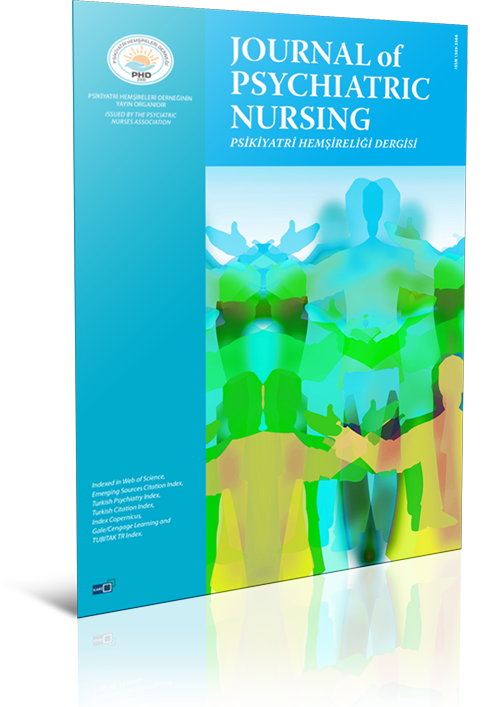
Internalized stigma and the quality of life and self-esteem of individuals with bipolar disorder
Aytuğ Türk1, Nezihe Bulut Uğurlu21Department of Mental Health and Diseases Nursing, Ege University, Faculty of Nursing, İzmir, Türkiye2Department of Nursing, Muğla Sıtkı Koçman University, Faculty of Health Sciences, Psychiatric Nursing, Muğla, Türkiye
INTRODUCTION: This study was conducted in order to examine the effect of socio-demographic and clinical characteristics that are thought to have an impact on the internalized stigma, quality of life, and self-esteem of individuals with bipolar disorder and to determine the relationship between these variables.
METHODS: This descriptive cross-sectional study was conducted on 105 participants during the remission period in a community mental health center in İzmir City, Türkiye. The participants were interviewed face-to-face, and data were collected in December 2017 and April 2018 using the Socio-Demographic Data Form, Internalized Stamp Scale in Mental Diseases (ISMI), World Health Organization Quality Life Scale-Short Form (WHOQOL-BREF), and the Rosenberg Self-Respect Scale (RSES). The number, percentage, and average were used in descriptive statistics. Comparisons of inter-group socio-demographic and clinical variables are made using Spearmans correlation analysis, while the relation-ship between internalized stigma, quality of life, and self-esteem, which are conceptual variables, is evaluated using the MannWhitney U test and KruskalWallis variance analysis.
RESULTS: The patients' mean ISMI score was 58.56±18, and the mean WHOQOL-BREF score was 96.48±19.98. In addition, it was determined that 26% of the patients had low self-esteem. The socio-demographic and descriptive characteristics of the patients included education (p<0.05), income (p<0.001), employment status (p<0.01), a physical illness accompanying their mental illness (p<0.05), and the presence of a suicide attempt (p<0.05). It was determined that there was a significant difference between the groups on all scale scores. There is a strong negative relationship between ISMI and WHOQOL-BREF (r: −0.782, p<0.001) and RSES (r: −0.773, p<0.001), and a positive relationship between RSES and WHOQOL-BREF (r: 0.749, p<0.001).
DISCUSSION AND CONCLUSION: As internalized stigma increases, the quality of life and self-esteem decrease. For this reason, it is recommended to establish intervention programs to reduce the perceived level of stigma, improve their capacity to cope with and manage stigma, and increase their quality of life and self-esteem.
Manuscript Language: English



















